Last week, as part of our weekly #MantaMonday, we shared a photo taken by Kristian Laine of a very rare pink manta ray. This photo has received a wonderful response so we thought it was fitting to provide some more details on why our friend, Inspector Clouseau, is tickled pink.
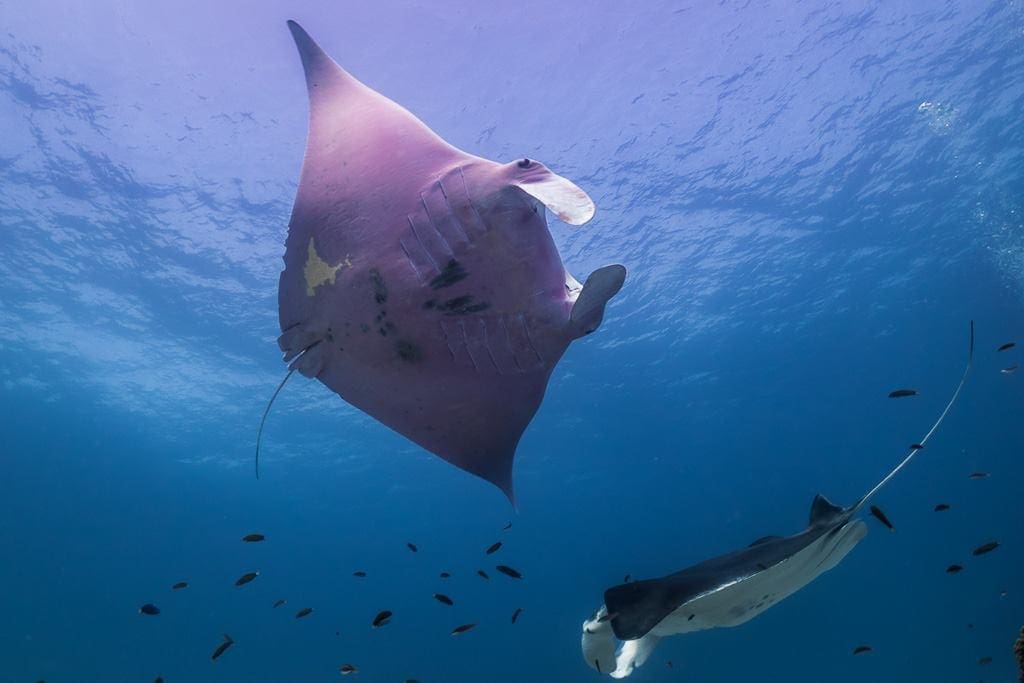
Photo Credit: Amelia Armstrong, Project Manta
We got in touch with Asia Armstrong and Kathy Townsend from Project Manta to learn more. Project Manta is a multidisciplinary research collaboration focusing on the population ecology and biology of manta rays within Australian waters. The group has been visiting Lady Elliot Island for many years and gathering research to better understand these magnificent creatures.
The pink manta, nicknamed Inspector Clouseau, is #900 in the Project Manta east coast photo ID database. He was first sighted back in 2015 off Lady Elliot Island, and in 2016 one of the Project Manta researchers, Amelia Armstrong, took a small skin biopsy of his underbelly (photo below).
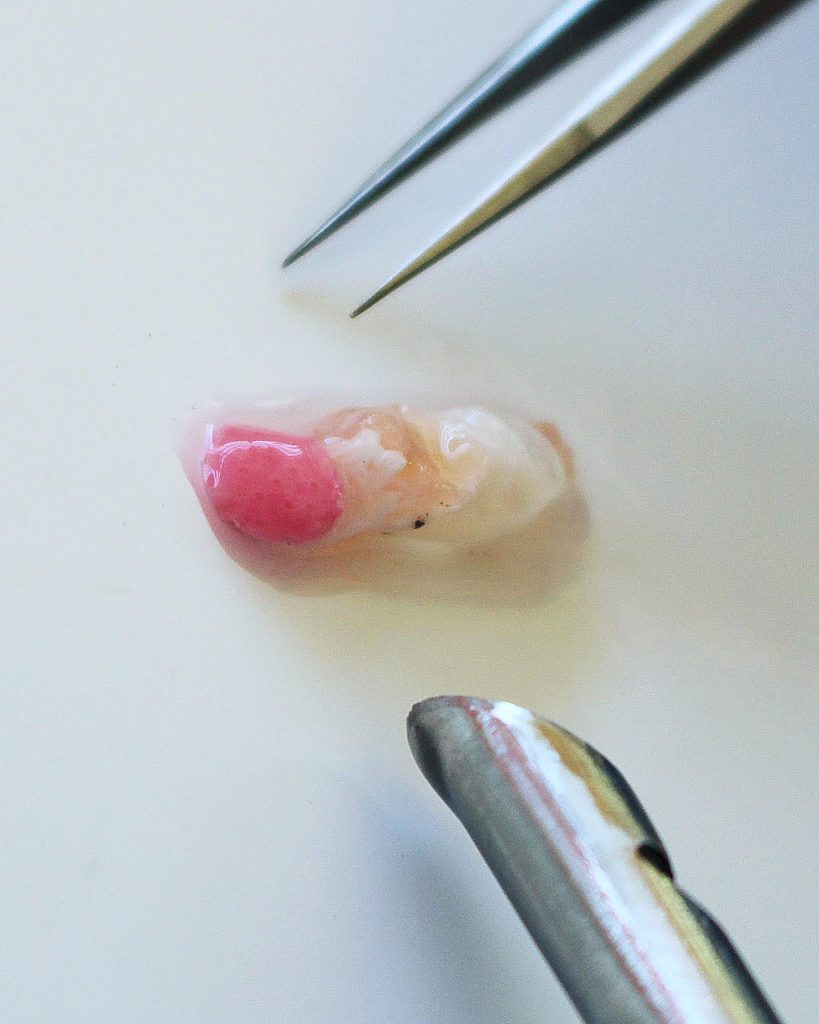
Photo Credit: Amelia Armstrong, Project Manta
“This was investigated for structural changes in the tissue, and was found to be consistent with samples from reef manta rays of regular colour morphology” explains Asia Armstrong.
Dr. Kathy Townsend explained that mantas come in three colour morphs – melanistic (all black), chevron (black back and white belly) and leucistic (pale grey back and white belly). “Inspector Clouseau is the world’s only known chevron manta ray that has a black back and a bright pink belly.”
“Genetic analysis revealed no difference at the population level between this individual and others in its cohort. The manta has been sighted numerous times with no change in pigmentation so, although we have not conducted stable isotope analysis, we have ruled out diet as the cause” continues Ms. Armstrong.
“The individual appears healthy with no unusual or uncharacteristic behaviours, and given the persistence of the pigment over time, we have also ruled out infection. We are hoping to further investigate this individual to confirm our hypothesis, but our current understanding is that this colouration is a result of a different expression in the melanin, likely a result of a genetic mutation. It is potentially an example of erythrism, where an animal’s skin, hair, feathers or fur exhibits a reddish pigmentation”.
The pink manta has only been sighted at Lady Elliot Island 7 times, with the first sighting being back in October 2015. During the last sighting in August 2019, he was observed involved in courtship behaviour so if we’re lucky there may be some baby pink mantas appearing soon.
The team at Lady Elliot Island and Project Manta are extremely happy that the pink manta has attracted attention for manta ray research in general. Citizen science is incredibly important, as well as photographers like Kristian, as they are highlighting the incredible natural world and providing valuable data to scientists to improve our understanding. Readers are encouraged to support Project Manta’s research by submitting photos of manta rays to [email protected] or via their Facebook page ‘Project Manta – The Manta Rays of Australia’.
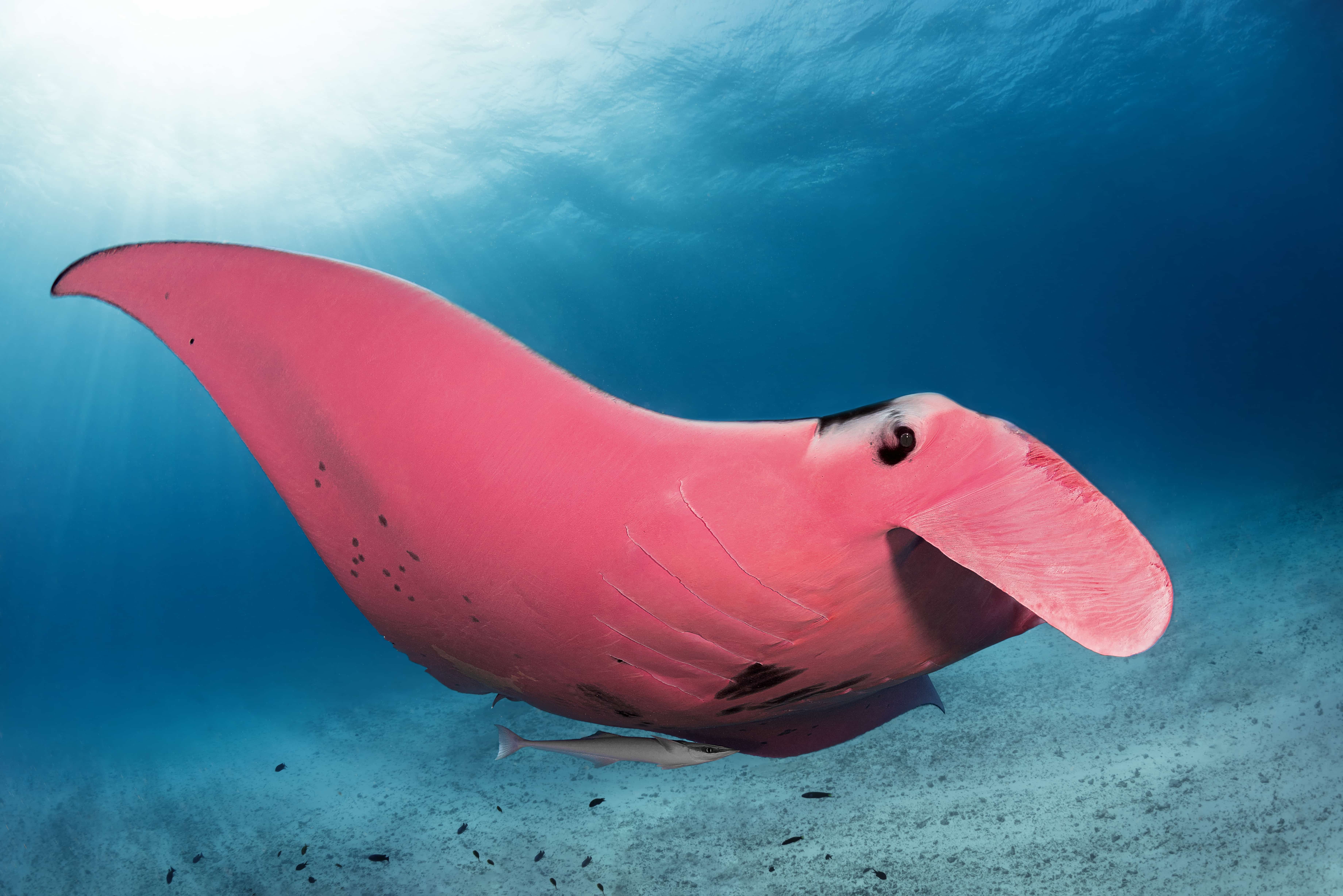
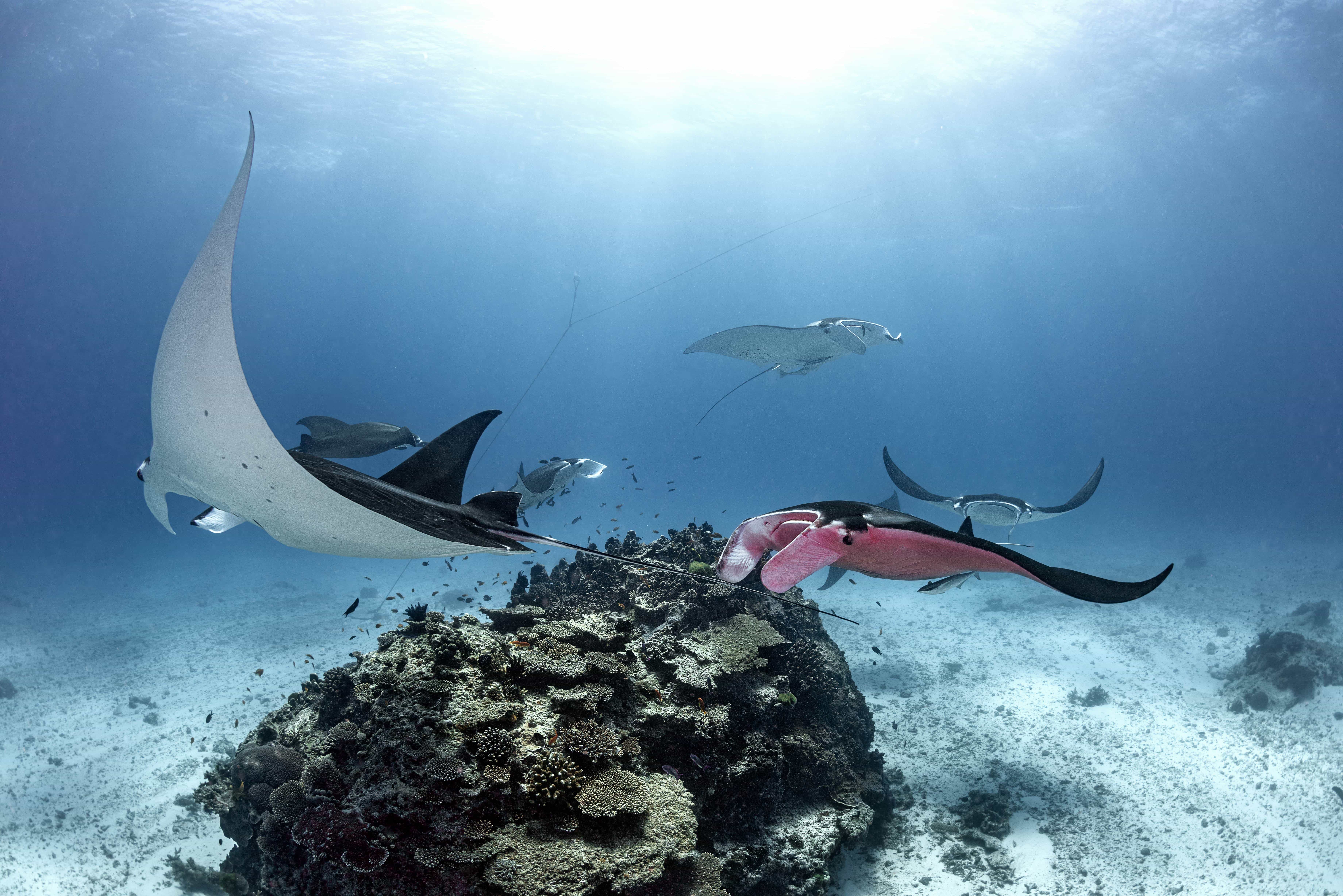
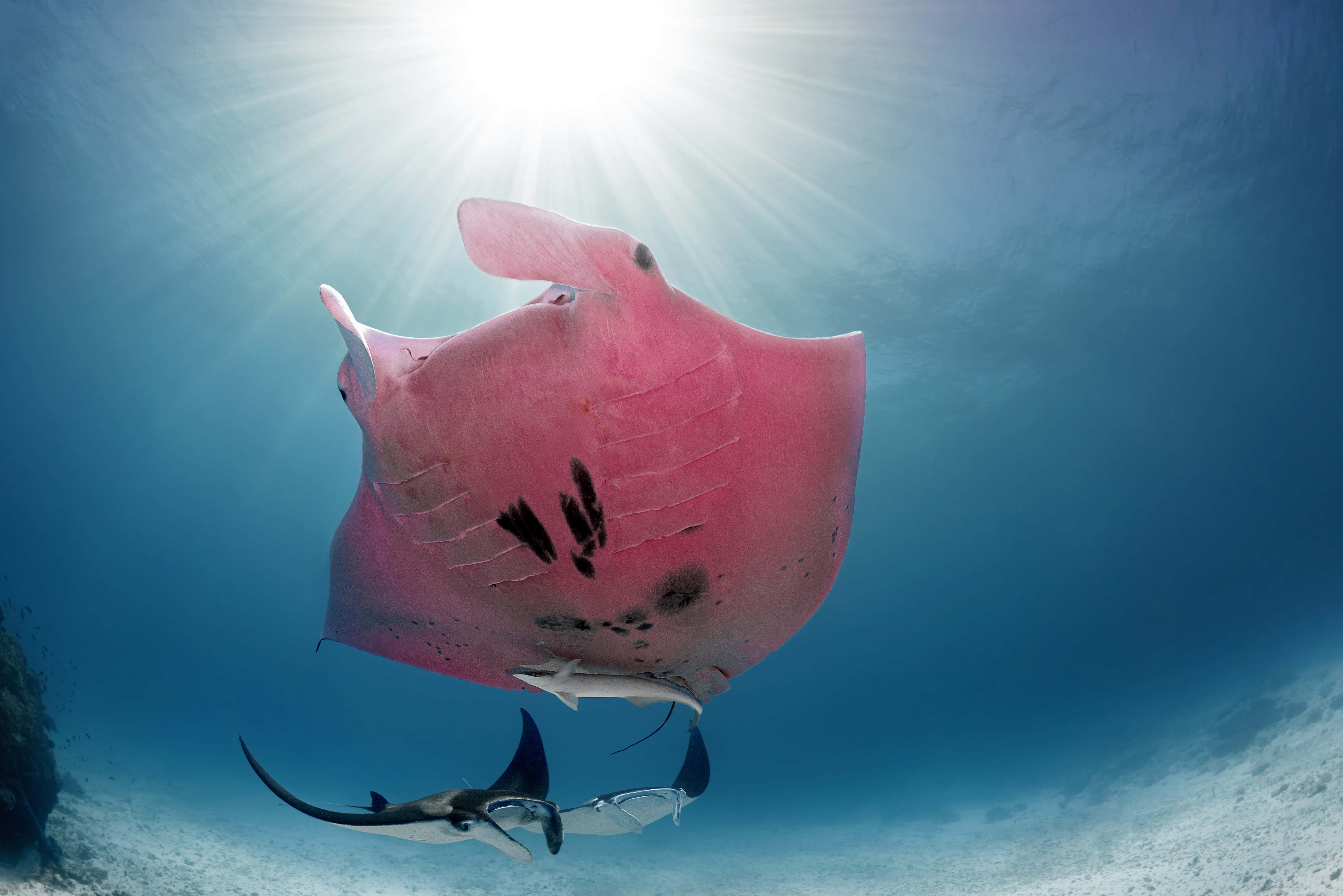






 Snorkel & Dive
Snorkel & Dive Sustainability
Sustainability